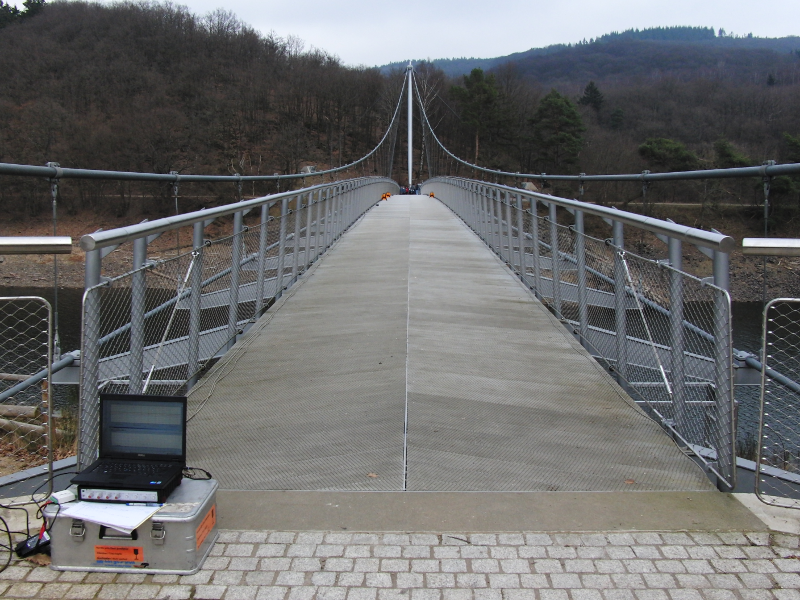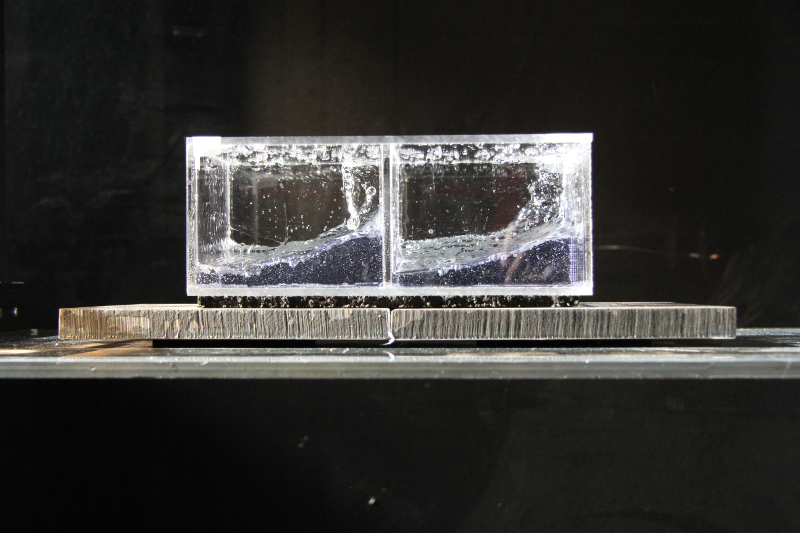Following the architectural trend, modern buildings are being executed more and more delicately. From a structural dynamic point of view, this leads to an increase in the vibration susceptibility of the structures, whose planning with a classic conventional structural design without dynamic analysis is increasingly inadequate. At the CWE, therefore, new measures of passive and active vibration technology are being developed using modern measurement technology and suitable dynamic structural models. These measures are designed to ensure durability and service ability as well as to extend the service life. The research priorities at the CWE include:
- System identification

- Numerical methods and structural simulations
- System monitoring
- Vibration reduction
- Building vibrations
- Human-induced vibrations (e.B. bridges)
- Intelligent damper systems
- Traffic and machine-induced vibrations
The structures to be investigated are examined in addition to the experimental methods of system identification by numerical models for the simulation, analysis and optimization of passive, semi-active and active measures for vibration reduction. In addition to the finite element method, multibody simulation models are also used. In order to achieve particularly high levels of effectiveness, the CWE develops intelligent damper systems that adapt adaptively to the system boundary conditions. These developments are made possible by the close cooperation of the CWE with leading institutes of the RWTH Aachen In the fields of measurement and control technology.
A major focus of the CWE is the evaluation and avoidance of human-induced vibrations. Typical problem areas here are modern wide and light ceiling systems that can be easily stimulated to vibrations even under normal conditions of use. Another example is light pedestrian bridges, which tend to large vibration amplitudes due to the low bridge mass due to dynamic influences. Extensive experience is available at the CWE in order to keep the vibrations within an acceptable framework and, for example, to avoid the occurrence of “lock-in effects”. In the field of high-speed trains, studies are carried out on the dynamic behaviour of bridges and secondary structures (e.B. soundproofing walls).
Extensive measuring equipment is available at the CWE for the experimental assessment of structural dynamic behaviour. This includes highly sensitive speed and acceleration transducers as well as unbalancing agents in the frequency ranges relevant to structures. This measuring equipment can be used in the context of structural monitoring in combination with strain, temperature and wind speed meters.
